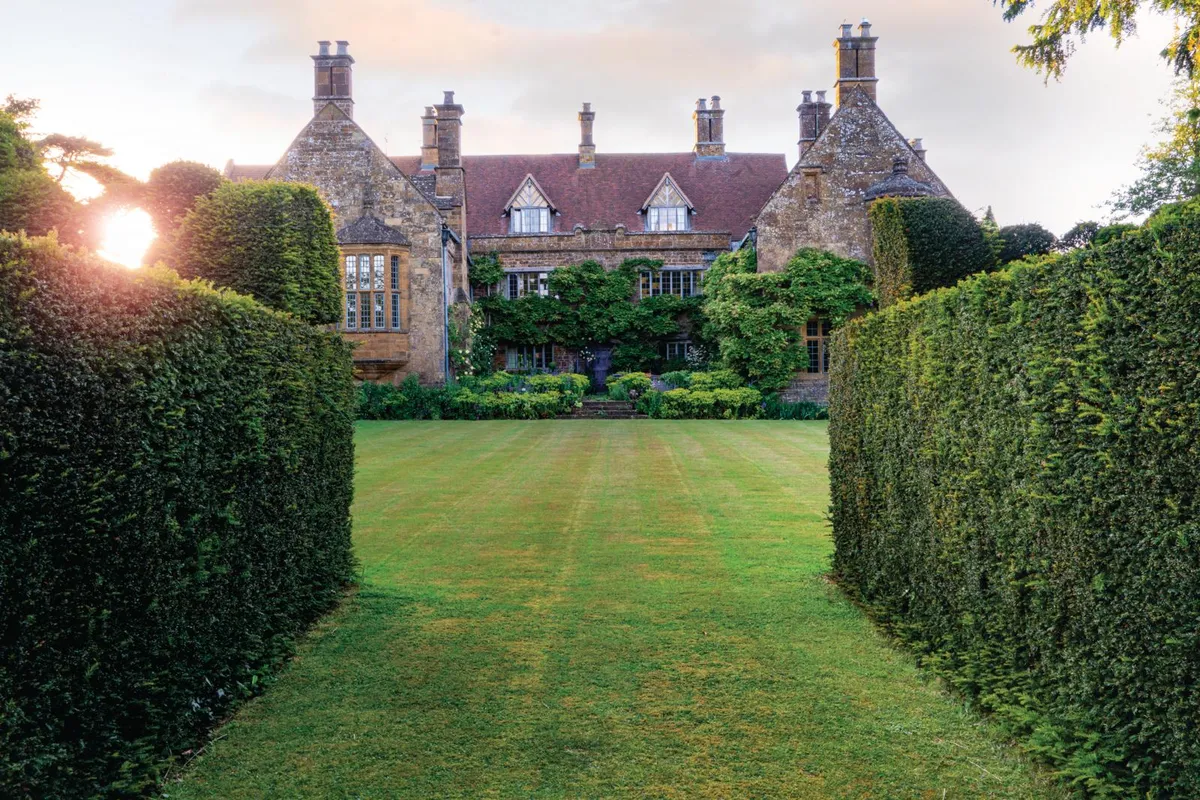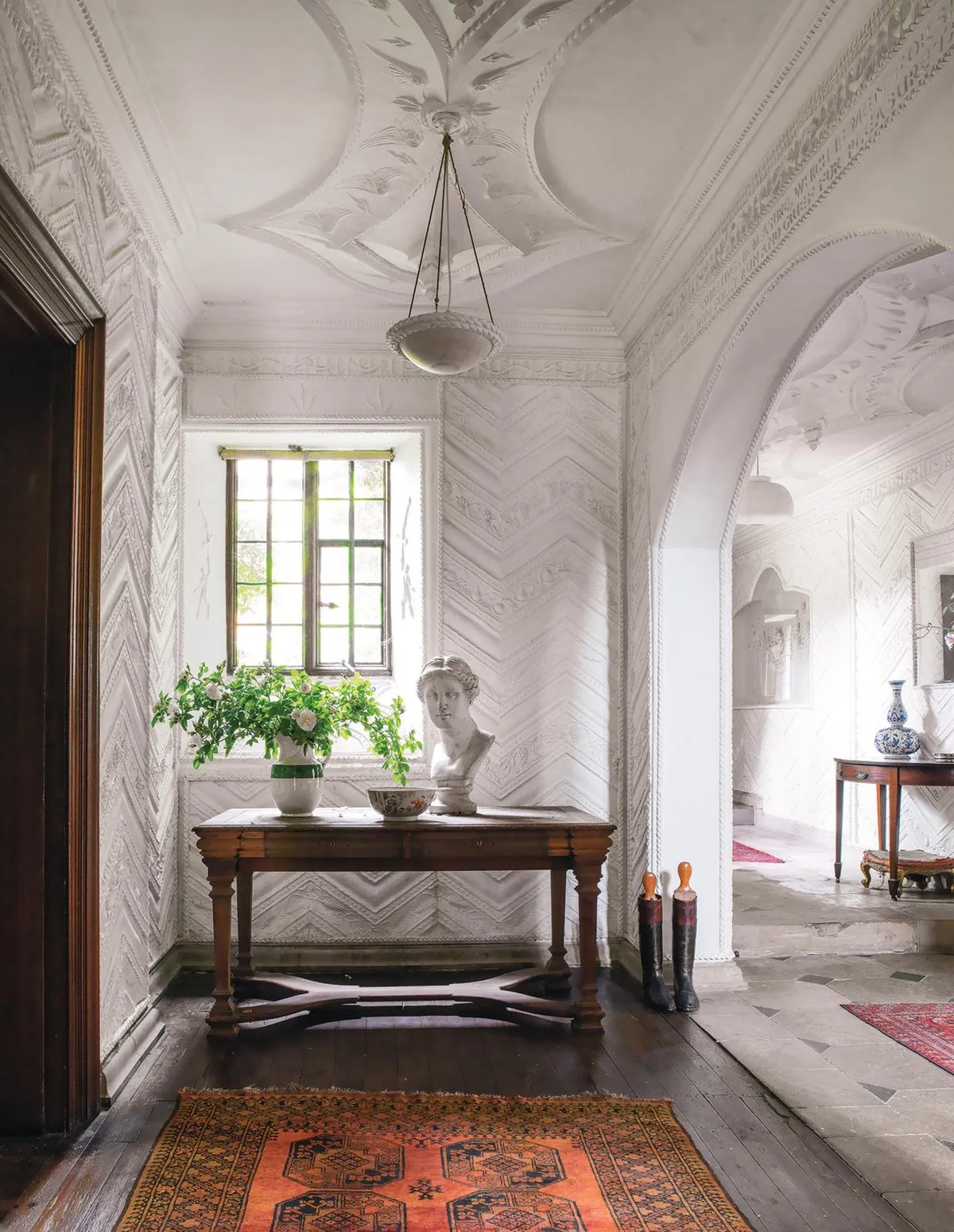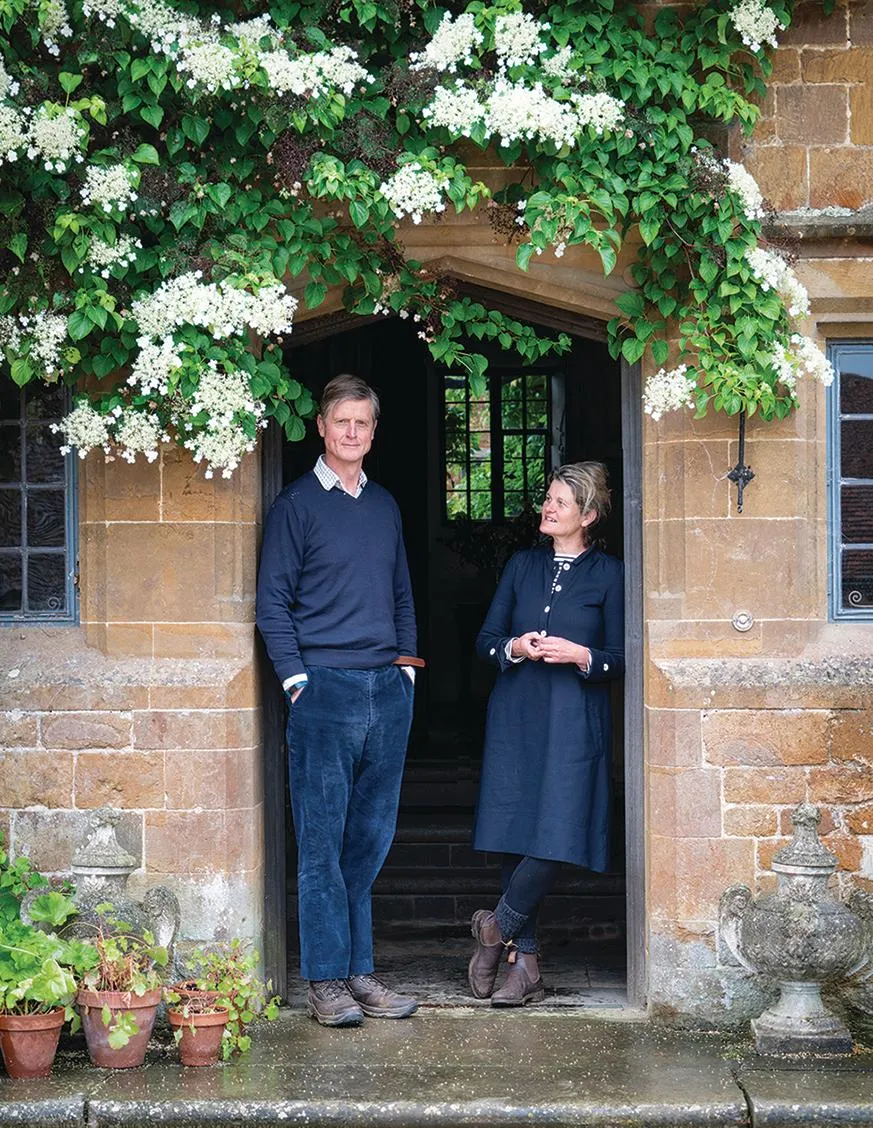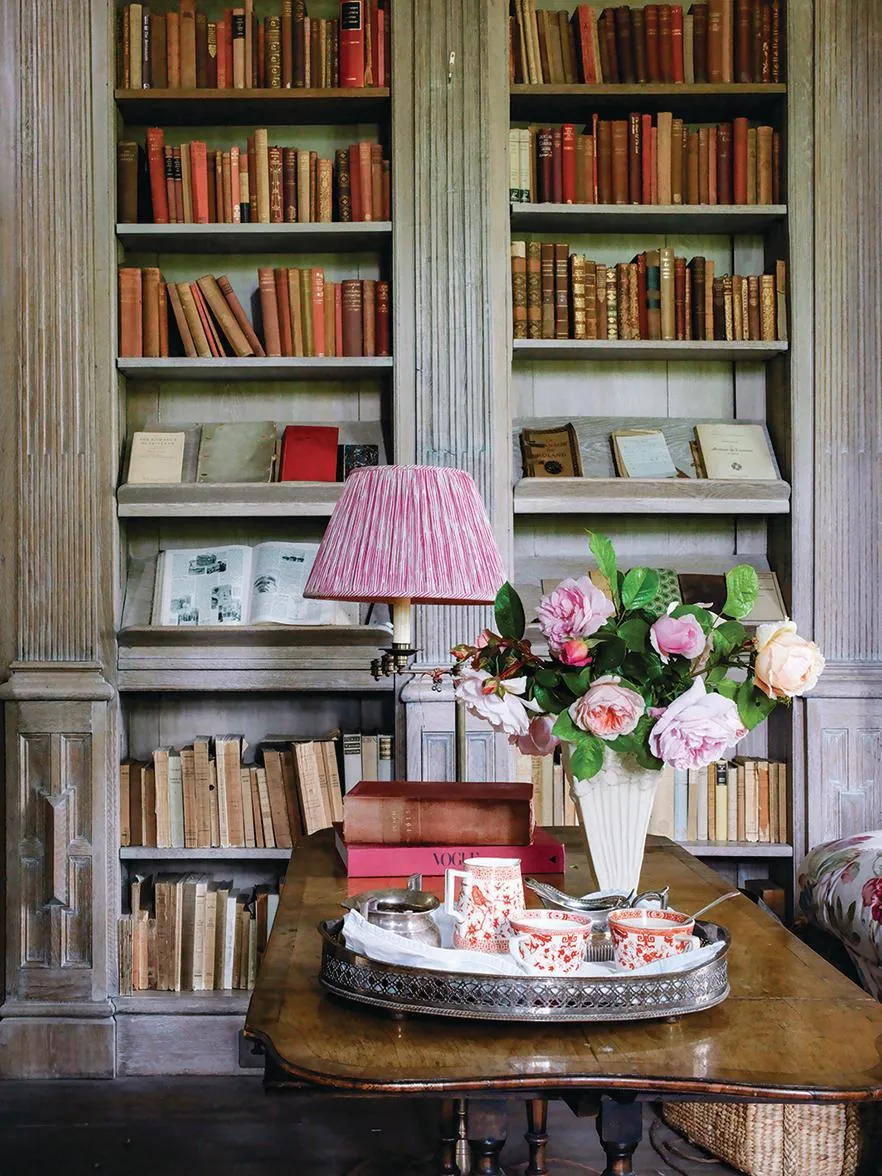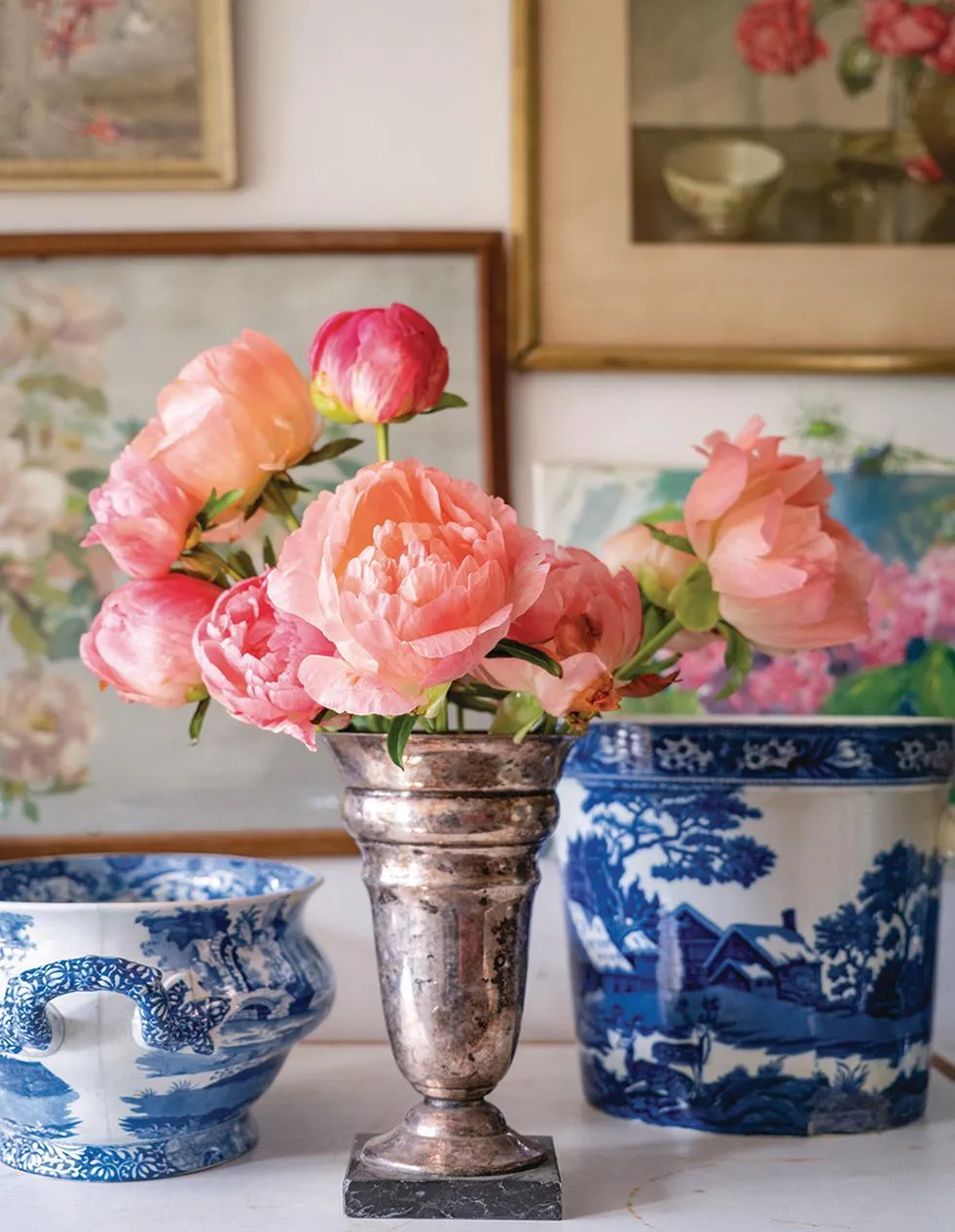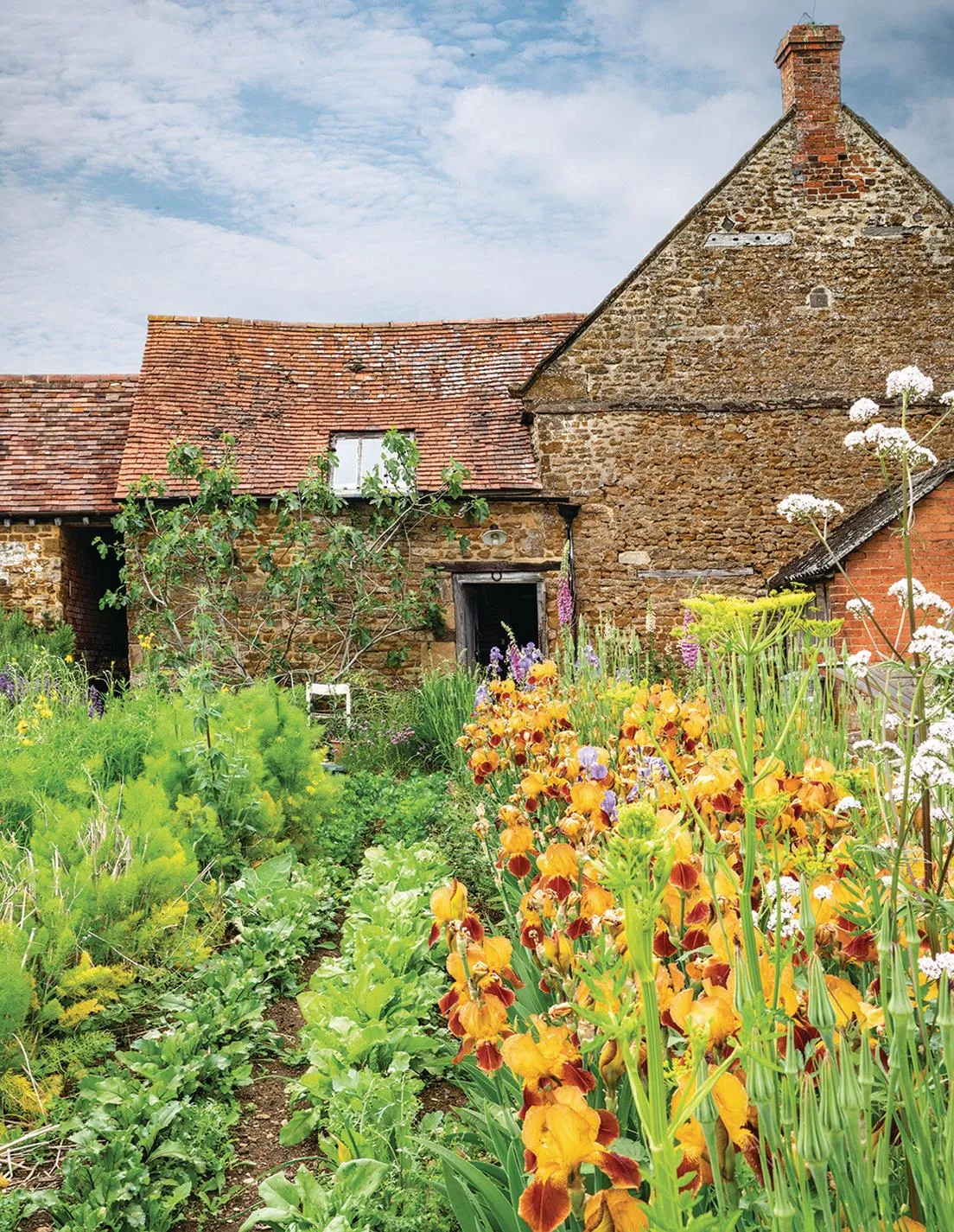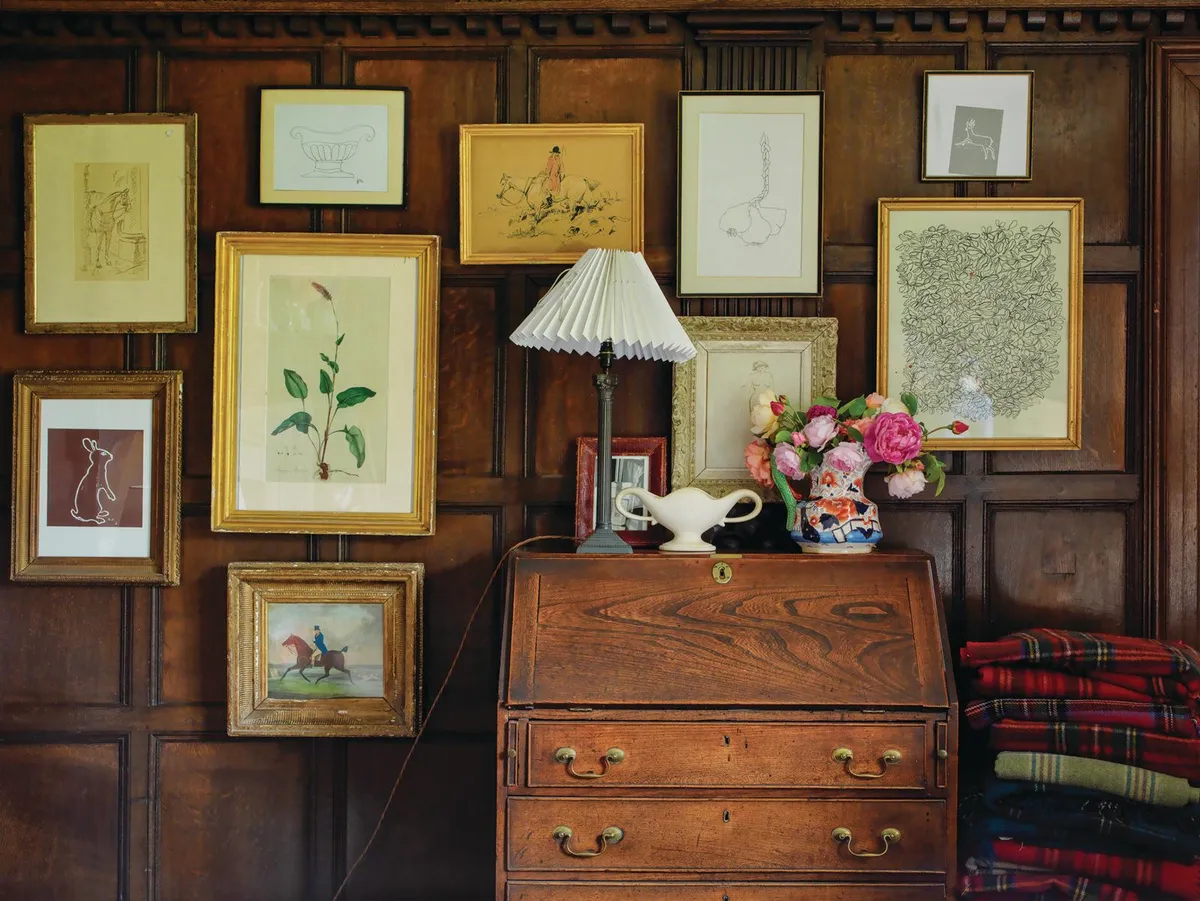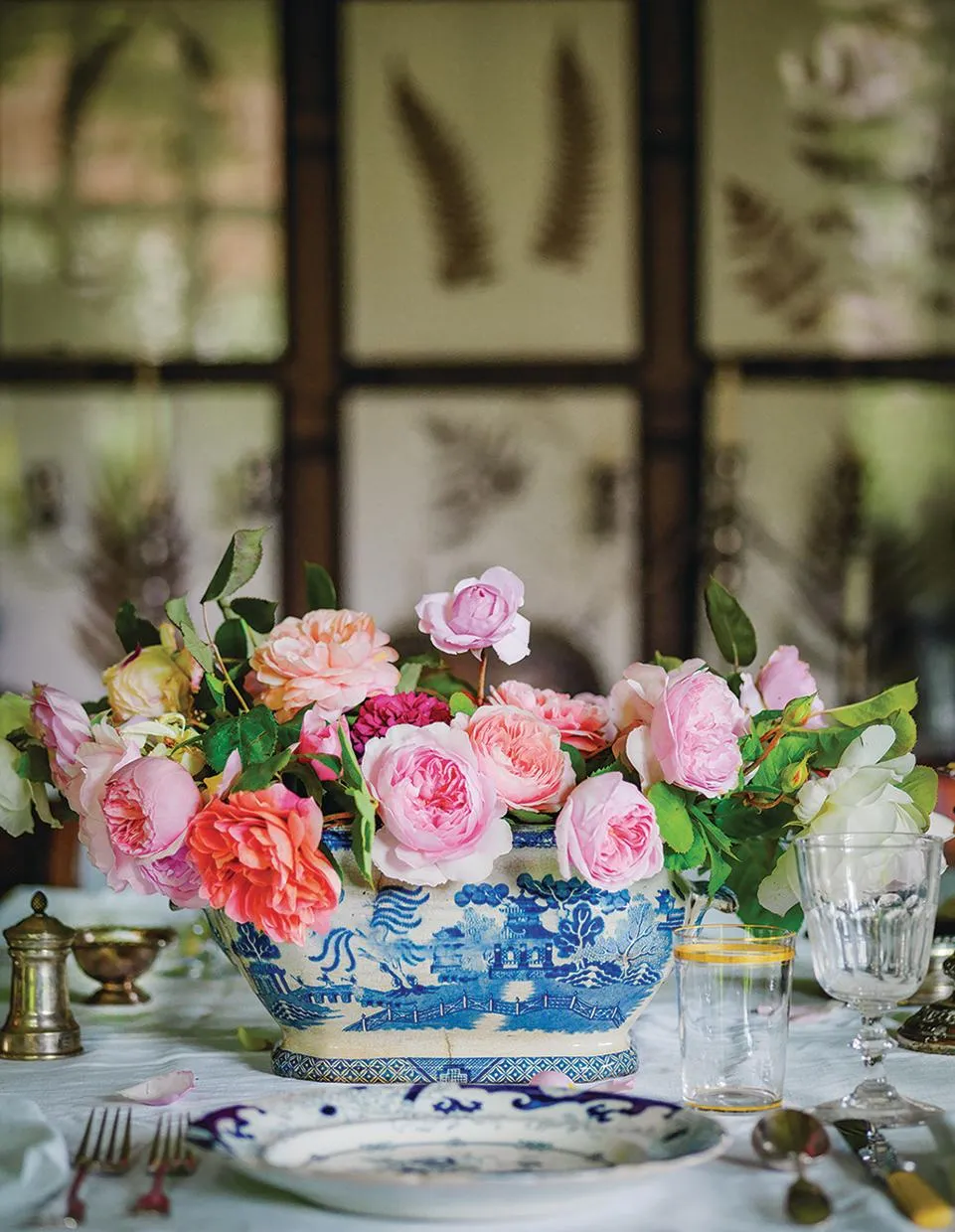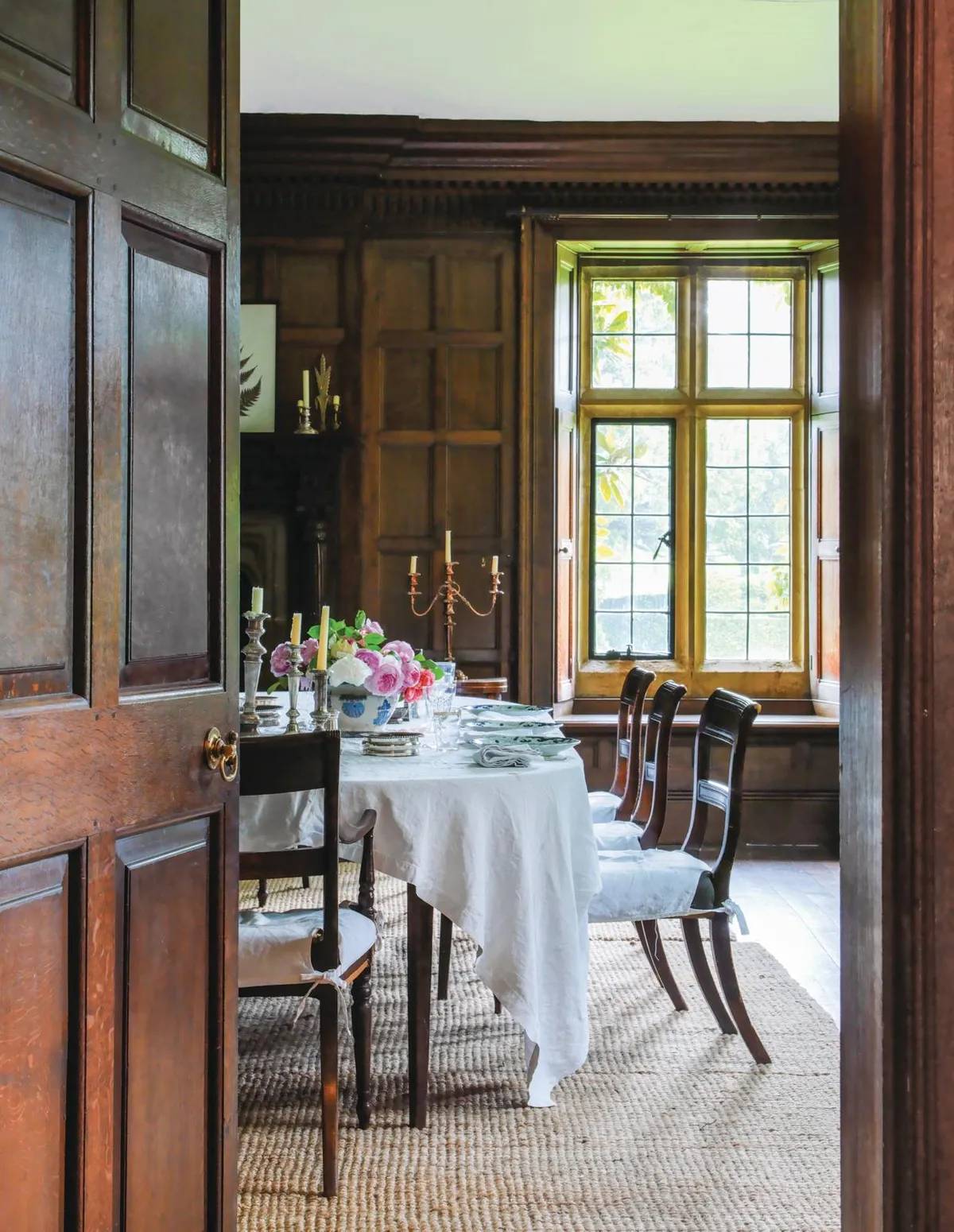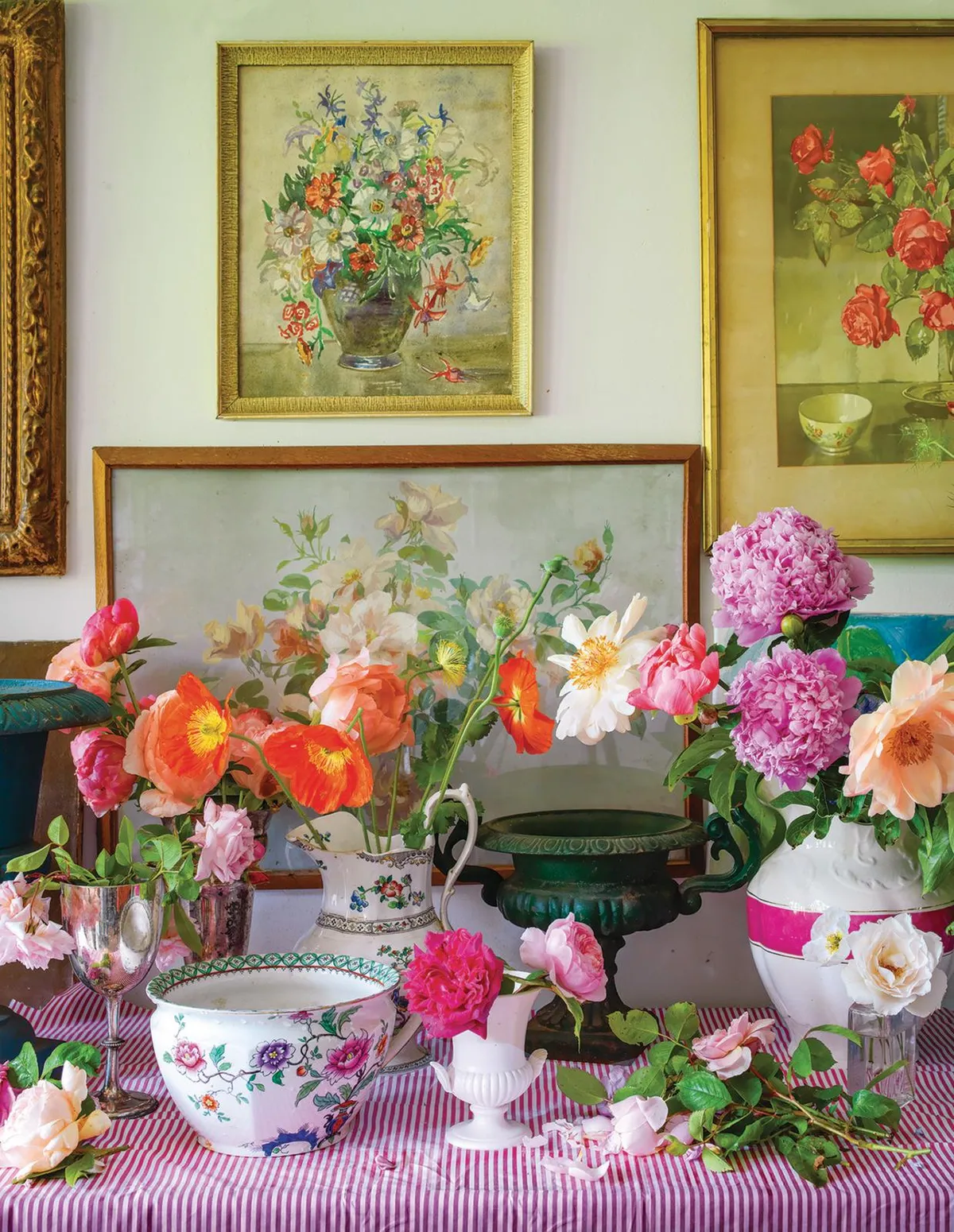Wardington Manor has always been a house filled with ideas, creativity and talented women. Over the years, a succession of visionary ladies and their architects have left their mark on its gardens and architecture. Beginning life as a nunnery in the 15th century, the house was reworked in 1665.
Again in the early 20th century, it went through considerable changes; initially by the celebrated British architect Sir Bertram Clough Williams-Ellis, and then later by Randall Wells. As an exponent of the Arts and Crafts movement of the time – a trend in the decorative and fine arts that began in Britain and flourished in Europe valuing craftsmanship and the romance of a medieval aesthetic over modern design – his additions to the house gave it a whole new meaning.
Evidence of this is most clearly pronounced in the 1920s sugarcraft-like plasterwork, exquisitely executed by Molly Wells, Randall Wells’ wife, which adorns the halls, stairways and landings. Her themes are joyous and uplifting: playful elephants, circus acts and acrobats, birds perched among a repeating pattern of chevrons, ears of corn and intricate patterns of fritillaries, primroses and violets, still grown in the garden today.
You might also like British house styles across the ages
Under the auspices of its 21st-century owners, the house now has an intriguing eccentricity and infectious energy. Current owners Bridget and Forbes Elworthy have imbued it with a gracefulness and sense of nostalgia that captures the very core of the English manor house tradition of the past. Inside, the living spaces wander over different levels and floors and are decorated simply but tastefully, paying homage to the timeless and liveable English country house style. It is a look that manages to be both grand and infinitely comfortable.
Treasured art, ornaments, deep chintz sofas and chairs, lamps, side tables and piles of books all give the feeling of a genuinely lived-in home. ‘It’s a relaxed style that embraces wear and tear, and doesn’t take itself too seriously,’ says Bridget. Dogs sleeping in baskets in the kitchen, chickens clucking about in the stable yard and ponies grazing in the paddocks all add to the ambience.
As with the interior, the gardens ramble around the house like the English roses that climb up the walls. There’s an enviable maturity and faded romance that only centuries of cultivation and nurture and nature can create. Laid out as a series of formal and informal garden rooms enclosed by ancient ironstone walls and high yew hedges, it is quintessentially English in design – that delightful combination of manicured lawns and overflowing herbaceous borders watched over by trimmed topiary figures.
Bridget and Forbes come from farming stock in far away New Zealand, where they developed their love and connection with the land. When searching for a home in the English countryside back in 2008, they were, in the course of time, inspired to take on the challenge of Wardington Manor by its predecessor, Lady Audrey Wardington. After they moved into the house they discovered that, 60 years earlier, the first Lady Wardington had been supplying London’s florists with foliage and the garden’s fragrant wild roses.
You might also like Spring gardens to visit around the UK
In the meantime, another serendipitous event took place – a meeting with Henrietta Courtauld through their children’s school. The strong bond that developed between Bridget and Henrietta gave birth in 2012 to The Land Gardeners. Calling to mind the Women’s Land Army in the Second World War, when women took to the land and grew produce for the war effort, it’s a name that fits them well.
From the outset, Bridget and Henrietta were united in their driving passion for productive and organic gardens and their clear mission to design projects that demonstrate these principles. In view of this, they set out to communicate their ideas to an even wider audience, through a well-structured programme of talks, workshops and social media.
As designers of productive gardens and restorers of walled and historic gardens, healthy soil is fundamental to their work. As Henrietta explains, ‘We believe gardens should be places from which we gather to feed both ourselves and our souls, whether fruit and vegetables, herbs or flowers.’
With a clear objective in mind, they try to create vital ‘alive’ gardens teeming with insects and birds, knowing that the energy of a garden reflects the life within the soil. ‘The health of our plants and ultimately animal and human health rests on how we nurture the life below ground,’ says Henrietta.
Encouraged by the extraordinary layers of rich, chocolatey coloured soil they found at Wardington Manor, Bridget and Henrietta embarked on a mission to make the gardens even more productive. Through their expertise in composting and strict organic practices they restored the earth to microbial richness.
You might also like our favourite arboretums to visit
Whether it was an impulsive moment or happy accident they are not quite sure, but this activity led to a reawakening of the garden’s history of growing cut flowers for appreciative customers in London. ‘Growing seasonal cut flowers seemed like the perfect way for us to put into practice the knowledge that we were accumulating about soil and plants,’ says Henrietta.
However, it’s been a demanding but rewarding journey for The Land Gardeners, who have learned a great deal along the way and achieved something quite magical. ‘We never tire of the joys of picking huge armfuls of blowsy blooms – wild and gloriously imperfect that celebrate the colours and very essence of the English garden,’ says Bridget.
Their shared passion for truly alive gardens inspired Bridget and Henrietta to publish their book The Land Gardeners: Cut Flowers. ‘We want to share the invaluable knowledge we’ve learned about growing flowers for cutting by telling our story and producing a visual diary,’ explains Henrietta.
The book takes the reader through a year of flowers in the garden, showing what to do and what to gather season by season. They talk about their favourite plants and show how they grow them, helping others to enjoy the glorious magic of real garden-grown flowers. Truly a labour of love.
